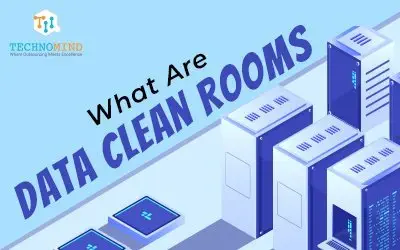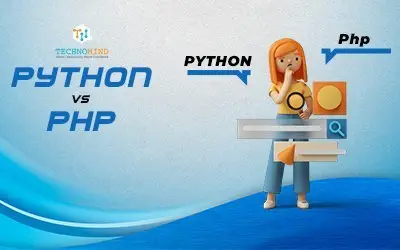Blog
Everything You Need To Know About Low Code Vs No Code Technology
Although the need for hyper-automation and IT modernization has increased, businesses have found it difficult to keep up with these trends due to the current shortage of developer expertise. Due to lacking resources with specialized technical expertise, many IT projects are placed in the “pending” file. As a result, operational inefficiencies persist and businesses’ time-to-market, which is essential for staying competitive, is compromised.
Low-code and no-code software development methods have emerged as workable and practical alternatives to the conventional development approach to address these issues.
In this blog, we will take a quick look at emerging development technologies Low Code and No Code. Let’s check it out.
Low Code vs No Code
Low code vs no code are two software development approaches that are designed to make it easier for individuals to create their own software applications. These approaches differ in terms of their complexity and the level of technical knowledge required to use them.
What is Low Code?
Low code platforms provide a visual interface for building software applications. These platforms are designed to help developers create software quickly and easily, without the need for extensive programming skills. Low code platforms typically provide pre-built components and modules that can be combined and customized to create a complete application.
Low code platforms often involve a significant amount of coding, but they aim to reduce the amount of manual coding required. This is done by providing visual drag-and-drop interfaces that allow developers to design the user interface, create data models, and define business logic without writing code. Low code platforms typically include a visual development environment, pre-built components, and an integrated coding development environment (IDE).
The Rise of Low- and No-code Tools
Low-code vs no-code platforms have their roots in older rapid application development (RAD) products like Excel, Lotus Notes, and Microsoft Access that gave business users (i.e., non-IT professionals) access to some development-like features.
However, in order to expand capabilities, those tools required users to have a full understanding of the business apps and their development environments. Users require little to no understanding of the tools or of programming in general when using the drag-and-drop capabilities of low-code vs no-code alternatives, in comparison.
Additionally, the functionality generated with RAD tools is typically only used by the creator or a small set of users who are connected to them (typically a workgroup or business unit). On the other hand, apps created using low-code or no-code platforms are reliable enough to be used throughout the enterprise, across departments, and even by external users like clients and business partners.
No-Code vs. Low-Code: When to Use What?
If you need to create basic applications that are centered on increasing the effectiveness of a straightforward procedure and that require little to no customization, No-code is a viable option. As an illustration, switching from a spreadsheet report to a dashboard that is simpler to grasp can increase staff productivity.
Common use cases for No-code include:
- Approval of expenses
- employee orientation
- scheduling and calendaring
- Order management
- Vacation approval
Low-code is ideal for enterprise use cases since it is more versatile than no-code and was created for professional developers.
Developers can leverage the current building pieces, such as pre-built patterns, screens, widgets, and even app templates, with the more sophisticated and modern low-code platforms (visit the numerous flavors of low-code in this blog post about the low-code market). However, they can also use conventional programming to modify and expand these components. Or, if they’d rather, they can build the components themselves.
The most recent low-code systems, or what we’re calling high-performance low-code, furthermore provide cutting-edge security capabilities and enterprise scalability. These platforms are ideal for any enterprise use case in which conventional code would be used without the needless complication.
Additionally, low code permits enterprises to close the gap between IT and business, in contrast to no code and the danger of shadow IT. Developers may collaborate with stakeholders and UX at all phases of the development process thanks to its visual modeling capabilities, which significantly speed up time-to-market.
Common use cases for low-code include:
- Apps and platforms for clients and partners
- Internal business software
- Organizational process automation
- Modernization of old and retired applications.
Low Code and No Code: The New Future of Development?
Low Code vs No Code got tremendous popularity in recent times and due to their immense benefits we can’t deny the statement that they might be the future of development. Let’s understand their importance in the future by taking a look at their benefits.
Growing Demand for Customized Applications
As businesses become more reliant on technology, there is a growing demand for customized applications that meet their specific needs. However, traditional software development methods can be time-consuming, expensive, and require specialized skills. Low-code vs no-code development addresses this issue by providing a simplified development process that enables businesses to create customized applications more quickly and affordably.
Increased Accessibility
Low-code vs no-code development approaches make software development more accessible to non-technical users, such as business analysts, designers, and marketers. By providing a visual interface and pre-built components, these approaches enable non-technical users to create applications without the need for extensive coding skills. This increased accessibility means that more individuals can contribute to the development process, resulting in faster development times and a wider range of perspectives.
Rapid Prototyping
Low-code vs no-code development approaches make it easier to rapidly prototype software applications. By providing pre-built components and templates, developers can quickly create functional prototypes that can be tested and refined. This rapid prototyping approach enables developers to quickly iterate on their ideas and make changes to the application based on user feedback.
Increased Collaboration
Low-code vs no-code development approaches enable increased collaboration between developers and non-technical users. By providing a visual interface and pre-built components, these approaches enable non-technical users to contribute to the development process more effectively. This increased collaboration can result in faster development times and a wider range of perspectives, leading to more innovative and effective applications.
Automation and AI
Low-code vs no-code development approaches can be integrated with automation and AI technologies, enabling developers to create more sophisticated applications. For example, low-code platforms can be used to create workflows that automate repetitive tasks, while AI technologies can be used to analyze data and provide insights. By integrating these technologies, low-code and no-code developers can create applications that are more efficient and effective.
Conclusion
Low-code vs no-code development approaches have gained significant popularity in recent years and are projected to play a major role in the future of app development. These approaches enable businesses to create customized applications more quickly and affordably, while also increasing accessibility, collaboration, and innovation. As technology continues to evolve, low-code vs no-code development approaches will likely become even more sophisticated and widespread, transforming the way software applications are developed and deployed.
How Much Does it Cost to Hire a WordPress Developer?
Ever found yourself in the midst of online ambitions, pondering the investment needed to bring your WordPress…
What Are Data Clean Rooms And How Its Useful For Cookieless Retargeting?
In order to display tailored adverts, implement frequency capping, evaluate the effectiveness of campaigns, and carry…
Python Vs Php For Web Development: What To Use?
There are some fights going on in software development, PHP, and Python. It’s not about the end. When building a successful website you…





0 Comments